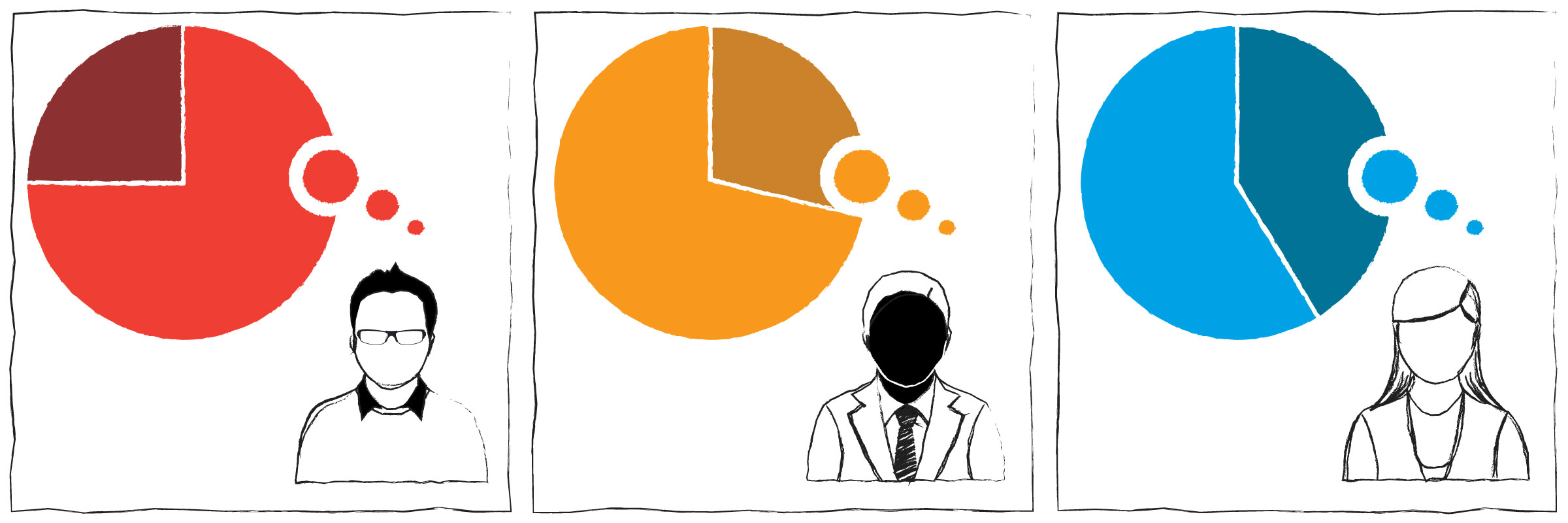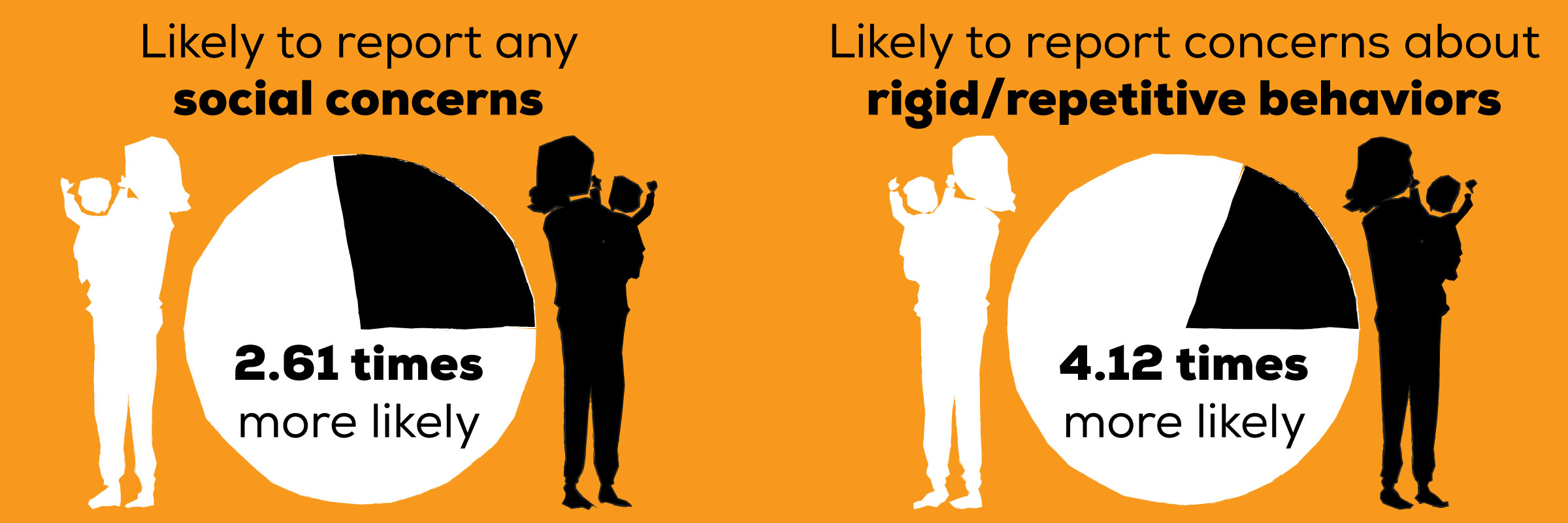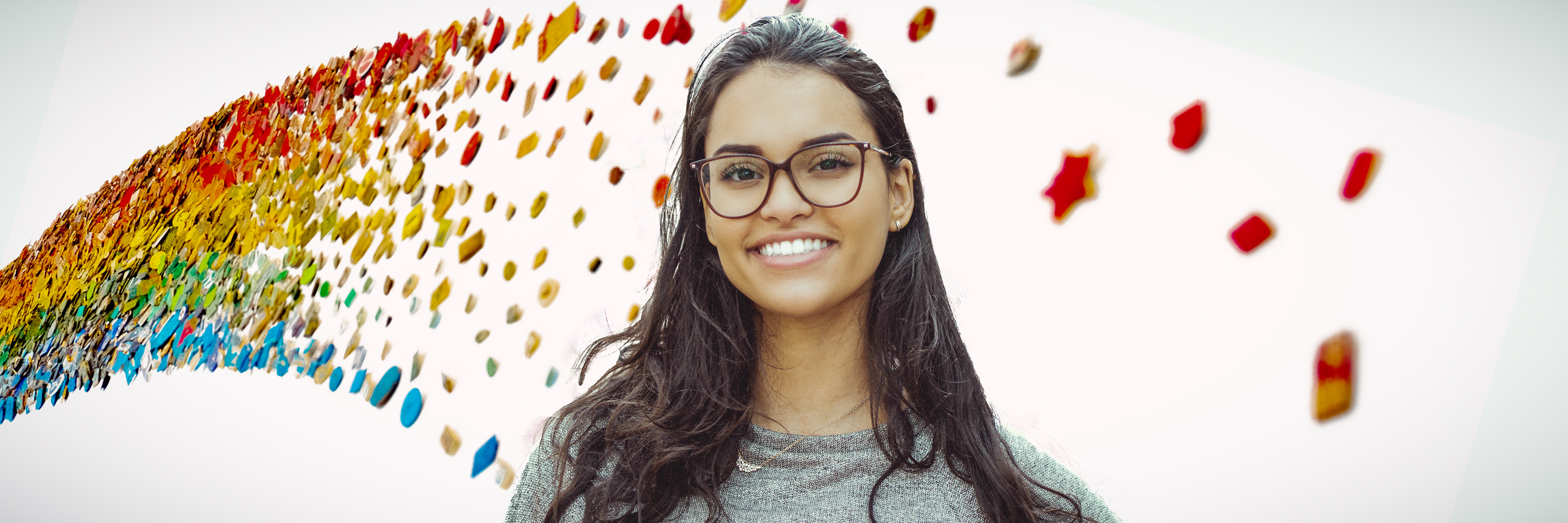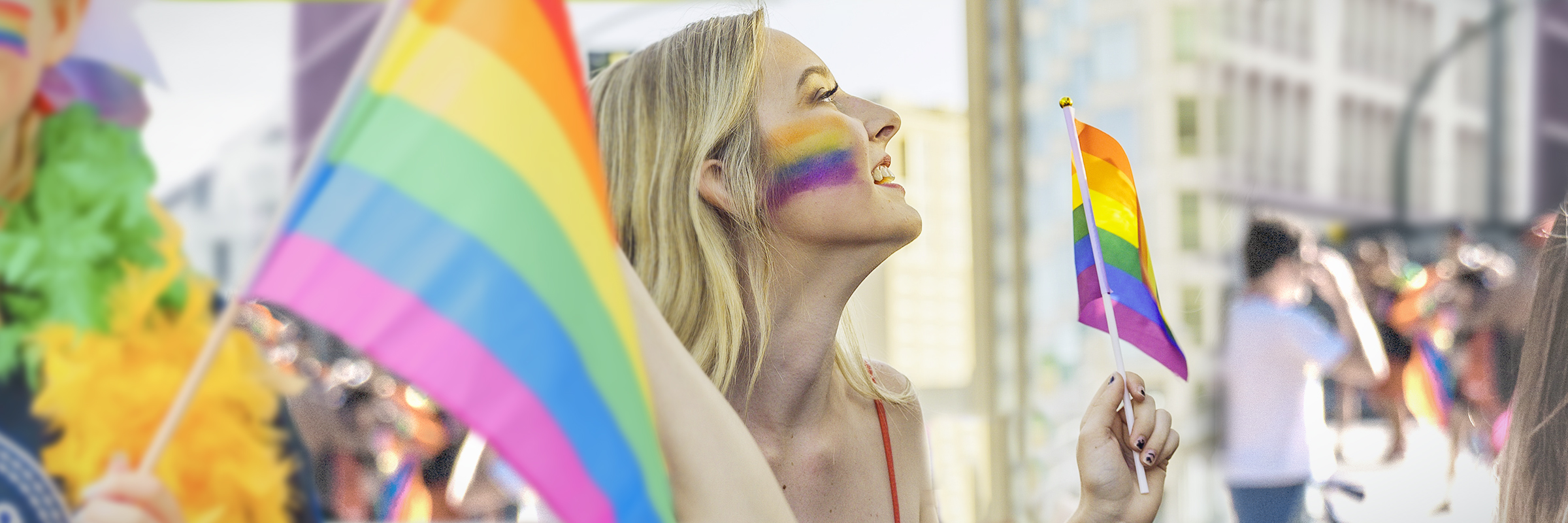Editorial Board Member Arianne Garcia considers the way various forms of discrimination can compound negative STEM college outcomes for autistic students in relation to race, gender, and sexuality. She begins by exploring the term “intersectionality” and then shows how it has serious consequences for many current and aspiring STEM students. The better we understand the challenges facing autistic students who also belong to other minority populations, the better we can recognize and support their particular needs.
Intersectionality is a term Kimberle Crenshaw used to describe the oppression of black women and their experiences with racism and sexism in 1989 (Perlman, 2018). The definition of intersectionality in Merriam-Webster’s dictionary refers to it as a noun:
“the complex, cumulative way in which the effects of multiple forms of discrimination (such as racism, sexism, and classism) combine, overlap, or intersect especially in the experiences of marginalized individuals or groups” (Merrium-Webster, 1989).
The word is a noun, so in proper sentence structure, it would be considered a “thing,” a framework to describe various, overlapping forms of discrimination. Since its inception, the term ‘intersectionality’ has been adopted for other marginalized identities, such as the LGBTQIA population and the disability community. Understanding the definition is so important because many autistic people are also part of other marginalized identities, which means they often experience intersectional discrimination. The importance of the meaning of the word cannot be understated. Clarity is also necessary because autistic people are more likely to have experiences with discrimination and may not recognize it right away.
First impression judgments and the need for self-advocacy
One of the hallmarks of autism is social communication (both verbal and nonverbal) challenges. Some of these challenges include missing visual social cues (eyebrow raises, smirks, darting eyes, etc.) and auditory social cues (tone and volume of voice, etc.). These challenges can create a gap in understanding between an autistic person and a typical social partner, especially if there is no diagnosis disclosure. When communicating, a neurotypical person will rely on audio-visual cues to determine interest, understanding, and connection. These judgments are subconscious and happen within seconds of the first interaction, referred to as a “first impression” (Sasson & Morrision, 2017). However, unconscious bias regarding race, gender, and sexuality can influence first impressions.

These internal (and sometimes external) biases can negatively affect not only casual social interactions but even health outcomes and job interviews, without regard to audio-visual cues or diagnosis disclosure. By understanding the social theory behind intersectional identity, autistic people of multiple marginalized identities can have the language for self-advocacy.
Autism and Race
Racism is prevalent in the current socio-political climate. Race even affects whether a child will receive an ASD diagnosis; the child is less likely to receive an autism diagnosis if they’re not white (Georgia State University, 2017). In a study of 174 toddlers along the East Coast, GSU found white parents of autistic children were 2.61 times more likely to report any social concerns to their child’s pediatrician than Black parents (Georgia State University, 2017). These parents were also 4.12 times more likely to report concerns about rigid/repetitive behaviors (Georgia State University, 2017).

Social cues vary culturally, and questionnaires designed by white researchers for white patients will yield a disproportionate racial diagnostic statistic. A study aimed to aide Latino parents was conducted at the Georgetown University Center for Child and Human Development and showed oral screening for autism is more successful than English or Spanish written questionnaires (Fufaro, 2017). So, we can improve rates of diagnoses and access to care by being culturally responsive in environments where autism screening takes place.
Information about autism can be hard to find, and stigma still exists in the media representation of autism. For example, television shows such as The Good Doctor and Atypical are about white males. These representations are not typical of autism in young Latinx and Black children or adults. Autism diagnosis disparities exist with communities of color. In a 2014 study, Latino parents informed researchers of their experience regarding:
low levels of ASD information and high levels of mental health and disability stigma in the Latino community. Parents had poor access to care due to poverty, limited English proficiency, and lack of empowerment to take advantage of services. Providers sometimes dismissed parents’ concerns. (Zuckerman MD MPH, et al., 2014)
Less access to diagnostic services delays care significantly, and autistic students of color don’t get the supports they need to succeed. This is a good example of how the intersection of disability and race negatively impacts these students’ lives. If autistic students are struggling for support because they lack a diagnosis, then any interest in STEM, they have will go through the educational system undiscovered.
In addition to the lack of educational supports, there are other factors involved with autistic students of color and their success in STEM, specifically within higher education. The National Center for Education Statistics conducted a research study about racial demographics in STEM, and the findings were intriguing: the percent of students entering STEM was about equal (18-20 percent). However, Black and Latinx students drop out of STEM classes at a higher rate than their white peers (Smith, 2019). One interviewee, Catherine Riegle-Crumb, an associate professor at the University of Texas in Austin, believes, “Discrimination and bias in science and technology often hinder minority students’ academic success” (Smith, 2019). That means even with support from the Disabilities Services Office, an autistic STEM student of color may still drop out of their major due to social interactions with other classmates. Discrimination and bias don’t end with race, however.
Autism and Gender
The American Association of University Women released a report stating implicit gender bias is one of the major contributing factors in hiring women in STEM. These discrepancies worsen for women of color. Bias is rampant in STEM: according to the report, one of the studies gave science faculty identical resumes for a potential candidate. Researchers found that the scientists were more likely to choose a male candidate over a female candidate for a hypothetical job opening. The scientists also offered a higher salary and better mentoring opportunities to the male candidate (American Association of University Women, 2015). That means that internal/external bias affects whether a social interaction will even happen.

However, the report does not specify neurotype, so the question remains: how does autism affect women in STEM? According to a study to examine the autistic population in STEM majors, researchers found that autistic boys were 13 times more likely to major in STEM than autistic girls (Wei, Yu, Shattuck, McCracken, & Blackorby, 2012). The study suggests that STEM participation among girls with developmental disabilities is an urgent issue. With these statistics as a baseline, this finding means that autistic women of color make up a percent of a percent of the total STEM workforce.
Autism and Sexuality
Studies have shown that autistic people have a higher than average rate of homosexuality, bisexuality, and asexuality (George & Stokes, 2017). LGBTQIA inclusivity in STEM curriculum reflects a positive outcome of LGBTQIA college students majoring in STEM (Hoelscher Ph.D., 2016). Dr. Hoelscher likens this to going to a party: “We want to know who will be there and if we’re welcome before we go.” Autistic people are more likely to be LGBTQIA and, therefore, more likely to experience multiple types of discrimination at school or work. Examples of LGBTQIA discrimination would be not allowing a trans woman to wear dresses simply because her gender expression is considered “too masculine,” or inappropriate remarks made about a same-sex spouse.

Social communication can inhibit the discriminated autistic person from verbalizing their issues, as they may not have the language necessary to self-advocate. However, the LGBTQIA community is aware of discrimination based on sexuality and how sexual orientation affects productivity:
“That issue [sexual orientation in the workplace] can be either a big positive or a big negative. If it’s a positive, people feel included and respected. They are more productive and more committed. If it’s a negative, people feel excluded and disrespected. They are less productive and far more likely to quit and go work for your competitor. And they’re more likely to file potentially costly harassment lawsuits.” (Rosner, Halcrow, & Levins, 2019)
Other cases of discrimination would be not recognizing a legal gender/name change (also known as deadnaming), cold-shouldering co-workers with same-sex spouses or cold-shouldering co-workers because of how they choose to gender express, or forbidding same-sex spouses at employee functions that welcome family members. Discrimination can also revolve around healthcare coverage: limited options, physicians dismissing your concerns or lacking healthcare knowledge about trans people’s bodies in active transition. Being an LGBTQIA autistic person can make recognizing subtle social cues such as cold-shouldering difficult.
Recognizing and Reporting Discrimination
Being autistic, some women/non-binary/trans people may not be instantly aware discrimination is happening. At school, if the negative interaction resonates with the autistic person, it’s helpful to the autistic person to report the bullying to their professor or Disability Services Office (Tyson, 2019). In the workplace, the autistic person would reference any company materials (e.g., employee manuals, dress codes policies, etc.) provided at the time of hiring and prepare themselves for a discussion with the Human Resource (HR) department or management.

By being versed in possible roadblocks, autistic students of multiple marginalized identities can educate themselves about discrimination, recognize it, and be prepared to advocate for themselves. When you’re an autistic person, addressing workplace bullying can be nerve-wracking, especially since the bullying could be about another part of your marginalized identity. It’s imperative to clear any potential misunderstandings and discuss the uncomfortable/unwanted behaviors with HR or management (Newton, 2019). Reporting inappropriate behavior ensures that you have taken the necessary steps to hold your workplace accountable for a positive work environment.
STEM isn’t statistically inclusive and it’s difficult to demand changes from the outside. However, it’s important to nurture STEM interests and teach autistic students to stand up for themselves. By including different perspectives within STEM, we have the capacity to create technology and conduct creative research to enrich and enhance our everyday lives.
Have you ever experienced discouragement from STEM?
How did you handle it?
Let us know in the comments below!
References
- American Association of University Women. (2015). Why so few? Women in Science, Technology, Engineering, and Mathematics. American Associate of University Women, https://www.aauw.org/research/why-so-few/.
- Fufaro, H. (2017, May 13). “Oral Test Successfully Screens Latino toddlers for Autism”. Spectrum News, pp. https://www.spectrumnews.org/news/oral-test-successfully-screens-latino-toddlers-autism/.
- George, R., & Stokes, M. (2017). Gender identity and sexual orientation in autism spectrum disorder. Sage Journals, https://www.ncbi.nlm.nih.gov/pubmed/28914080.
- Georgia State University. (2017, December 6). Parents’ reports of children’s autism symptoms differ by ethnicity. Science Daily, p. https://www.sciencedaily.com/releases/2017/12/171206162336.htm.
- Hoelscher Ph.D., M. (2016). Why (and How) STEM Curriculum Needs to Be LGBT Inclusive. GLSEN, pp. https://www.glsen.org/blog/why-and-how-stem-curriculum-needs-be-lgbt-inclusive.
- Merriam-Webster. (1989). Dictionary. https://www.merriam-webster.com/dictionary/intersectionality.
- Perlman, M. (2018, October 23). “The Origin of the Term ‘Intersectionality'”. Columbia Journalism Review, p. https://www.cjr.org/language_corner/intersectionality.php.
- Rosner, B., Halcrow, A., & Levins, A. (2019, January 8). Dealing With Sexual Orientation at Work. ABC News, p. https://abcnews.go.com/Business/CornerOffice/story?id=86784&page=1.
- Sasson, N., & Morrision, K. (2017). “First Impressions of Adults with Autism Improve With Diagnostic Disclosure and Increased Autism Knowledge of Peers”. Sage Journals, https://www.ncbi.nlm.nih.gov/pubmed/29039208.
- Smith, M. (2019, May 3). “The science divide: Why do Latino and black students leave STEM majors at higher rates?”. Washington Post, pp. https://www.washingtonpost.com/local/education/the-science-divide-why-do-latino-and-black-students-leave-stem-majors-at-higher-rates/2019/05/03/e386d318-4b32-11e9-93d0-64dbcf38ba41_story.html.
- Tyson, O. (2019, January 3). Bullying and Autism: How to Recognize Harmful Behavior and Create a safer School Environment . Stairway to STEM, pp. https://www.stairwaytostem.org/bullying-and-autism-how-to-recognize-harmful-behavior-and-create-a-safer-school-environment/.
- Wei, X., Yu, J., Shattuck, P., McCracken, M., & Blackorby, J. (2012). Science, Technology, Engineering, and Mathematics (STEM) Participation Among College Students with an Autism Spectrum Disorder. Springer US, https://www.ncbi.nlm.nih.gov/pmc/articles/PMC3620841/.
- Zuckerman MD MPH, K., Sinche MPH, B., Mejia MA CAS, A., Cobian BA, M., Becker MD PHD, T., & Nicolaidis MD MPH, C. (2014). “Latino Parents’ Perspectives of Barriers to Autism Diagnosis”. Academic Pediatrics, https://www.ncbi.nlm.nih.gov/pmc/articles/PMC4180801/.







1 Comment